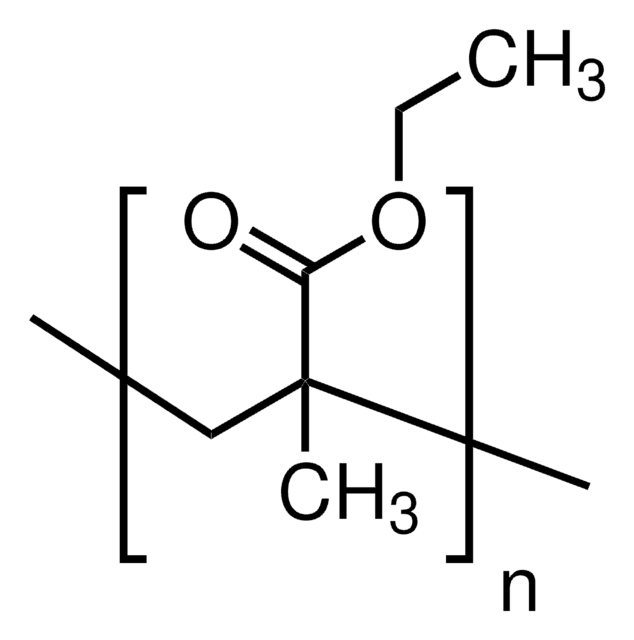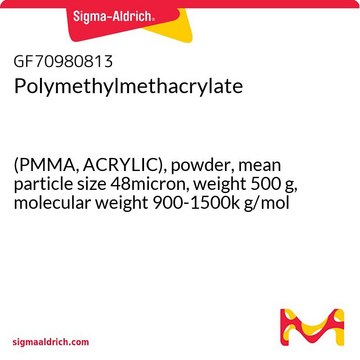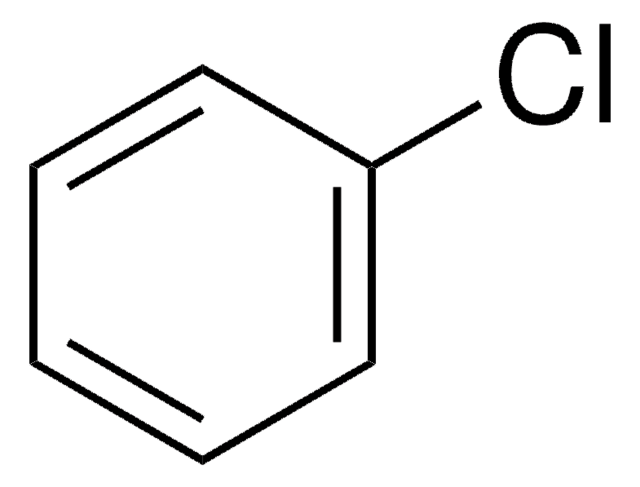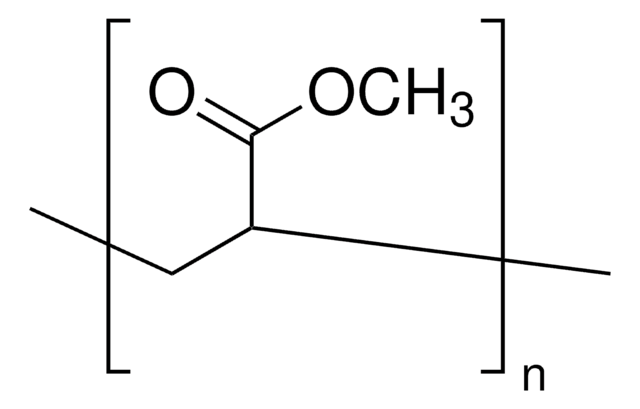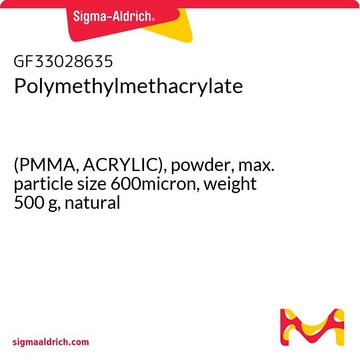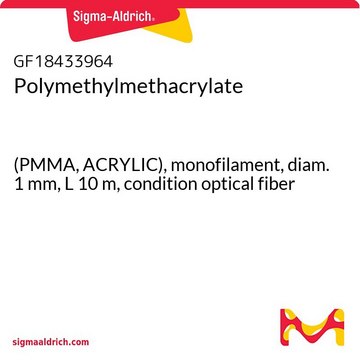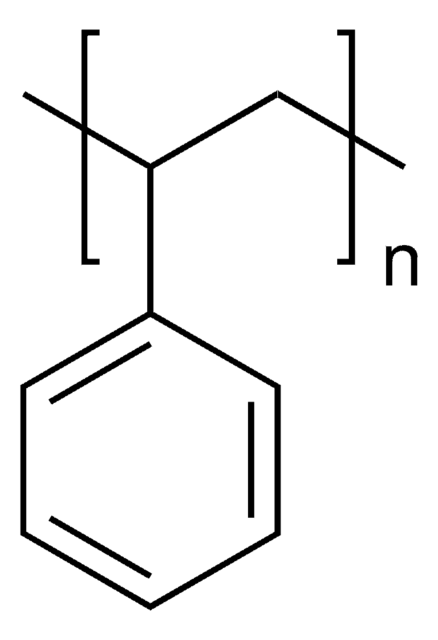182230
Poly(methyl methacrylate)
Sinônimo(s):
PMMA, Poly(methacrylic acid methyl ester)
About This Item
Produtos recomendados
temperatura de autoignição
580 °F
Nível de qualidade
Impurezas
may contain ≤2.0% toluene
índice de refração
n20/D 1.49
viscosidade inerente
0.20 dL/g(lit.)
temperatura de transição
Tg (DSC) 105 °C (midpoint)
solubilidade
H2O: insoluble
densidade
1.188 g/mL at 25 °C
InChI
1S/C5H9O2/c1-4(2)5(6)7-3/h1-3H3
chave InChI
PMAMJWJDBDSDHV-UHFFFAOYSA-N
Procurando produtos similares? Visita Guia de comparação de produtos
Categorias relacionadas
Descrição geral
Aplicação
Some studies report its use in
PMMA-titania hybrid optical thins films
PMMA/polystryrene/clay nanocomposites
PMMA/polyurethane/carbon black nanocomposites for methanol fuel cells
Código de classe de armazenamento
11 - Combustible Solids
Classe de risco de água (WGK)
WGK 2
Equipamento de proteção individual
Eyeshields, Gloves, type N95 (US)
Escolha uma das versões mais recentes:
Já possui este produto?
Encontre a documentação dos produtos que você adquiriu recentemente na biblioteca de documentos.
Os clientes também visualizaram
Artigos
In this article, we discuss issues critical to successful application of the electrospinning technique, including control of individual nanofibers to form secondary structures and assembly of nanofibers into 3D architectures.
Professor Aran (Claremont University, USA) thoroughly discusses the engineering of graphene based materials through careful functionalization of graphene oxide, a solution processable form of graphene.
Developed in the last several years, fluorescence quenching microscopy (FQM) has enabled rapid, inexpensive, and high-fidelity visualization of two-dimensional (2D) materials such as graphene-based sheets and MoS2.
Global Trade Item Number
| SKU | GTIN |
|---|---|
| 182230-500G | 4061838755674 |
| 182230-1KG | 4061838755650 |
| 182230-25G | 4061838755667 |
Nossa equipe de cientistas tem experiência em todas as áreas de pesquisa, incluindo Life Sciences, ciência de materiais, síntese química, cromatografia, química analítica e muitas outras.
Entre em contato com a assistência técnica
